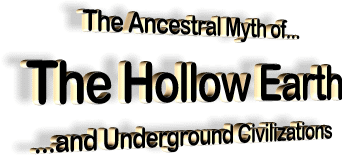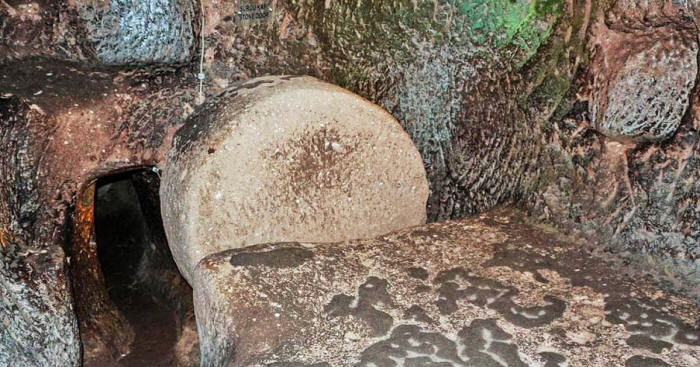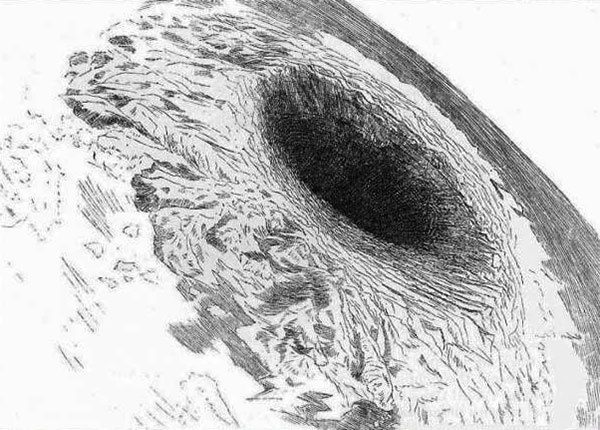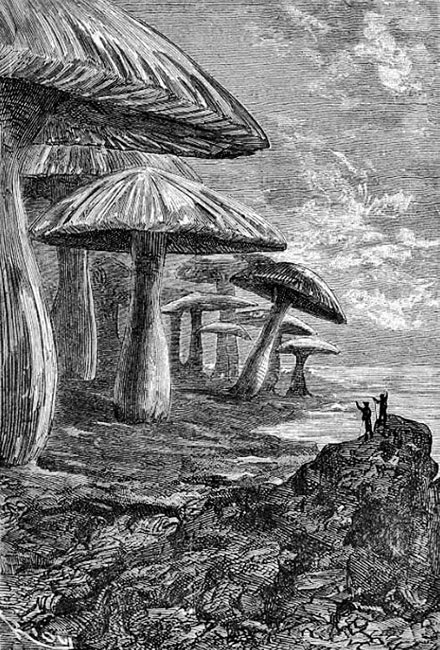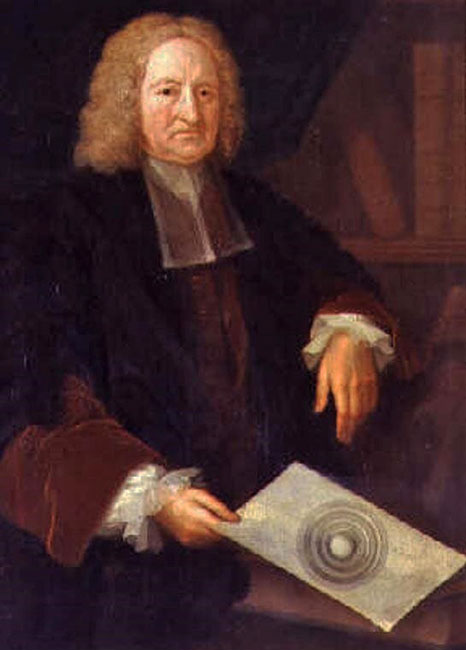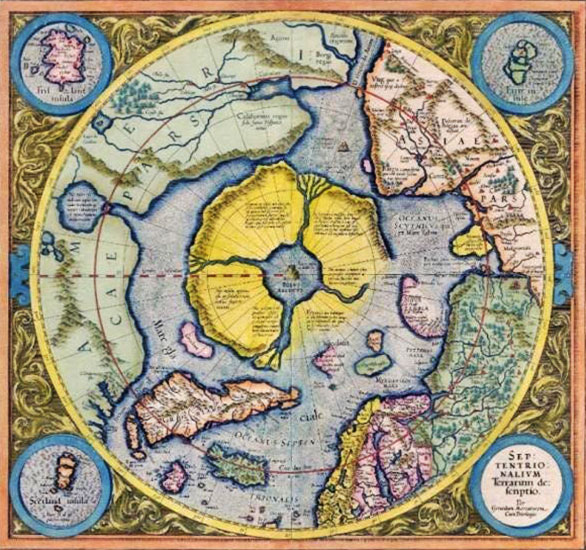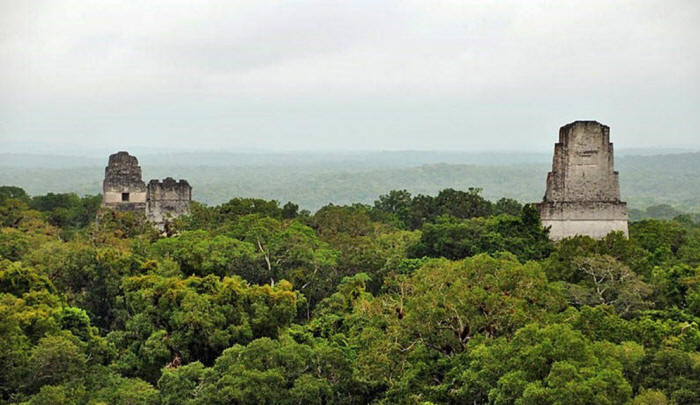|
Stone door at an entrance to the Özkonak Underground City, Turkey.
Source: Bernard
Gagnon/ CC BY-SA 3.0
There are many rumors surrounding these underground portals. We have only to remember the mysterious stories that revolve around the tunnels and galleries of the Cueva de los Tayos in Ecuador, or stories about entrances to underground worlds, supposedly located in,
The Hollow Earth Theory and an Expedition to the Arctic
The Hollow Earth theory states that the Earth is a hollow planet with ancient entrances to the subterranean world scattered throughout it, including near both polar caps.
This theory has been reported since ancient times and scientists such as Edmund Halley have defended it throughout history.
From 1818-1826, the American John C. Symmes passionately supported the theory as well.
Symmes launched a national campaign aiming to raise the necessary funds to send an expedition to the Arctic to search for an entrance to the subterranean world.
He even sent a proposal to the United States Congress, with the intention of getting government assistance to find the entrance to the inner world.
Unfortunately for him, he died before the government did allocate funding for his purpose and the expedition departed in 1838, although, in truth, its goals were not so altruistic.
In reality it was part of the ploy as world powers were trying to learn the importance of the only land not yet conquered the world: both polar caps.
Regardless, commanded by Charles Wilkes, the expedition lasted four years. It served to discover the vast geographical extent of the Arctic, but no sign of a passage into the earth was found.
The entrance to the Hollow Earth according to Symmes, as he believed we would see it from the moon with a telescope. Illustration of Harper's New Monthly Magazine October 1882
Nonetheless, the idea of Symmes remained anchored in the minds of a handful of writers (who tend to love the search for attainment of seemingly impossible dreams.)
Thus, Edgar Allan Poe, Jules Verne, and HP Lovecraft, among many others, paid tribute to the fascinating theory of the Hollow Earth.
Illustration drawn by Edouard Riou in 1864 from the original edition of "Journey to the Center of the Earth" by the famous Jules Verne.
Interest in the Hollow Earth theory did not end there.
In fact, in the twentieth century, with a knowledge of geography and geology of the Earth, that was still lacking, there were those who continued trying to access that mysterious world under the earth’s crust.
For example, some of the Nazi leaders, the lovers of ancient myths and the occult in Germany, showed a marked interest in these types of theories.
History of Hollow Earth TheoryEdmund Halley (1656-1742), the English scientist who studied the comet that bears his name, may have been the first to develop a scientific hypothesis about the Hollow Earth.
After a series of observations of the Earth's magnetic field, Halley concluded that the anomalies observed could only be explained if the Earth was composed of two spheres: an external solid one and an internal hollow one, each with its own magnetic axis.
Edmund Halley with a drawing showing shells of his hollow earth theory. (1736)
In the center it would be the Sun, with the planets and stars only appearing bright to us because they reflect sunlight on the surface of the concave Earth.
This land was called Koresh - which is the Hebrew translation of his own name, Cyrus. Teed even founded a church and its adherents remained active and defending these ideas until at least 1982.
With the dawn of the twentieth century other scholars, such as William Reed and Marshall Gardner, also believed they could provide evidence of the existence of an inner world.
One of the most curious facts wielded as an argument, made by some Arctic explorers, was that air and water temperatures warmed as they approached the North Pole.
Based on these and other observations, they also claimed that mammoths were not extinct, but still inhabiting the interior of the Earth.
As previously mentioned, there were Nazi leaders who supported the hollow earth theory.
Adolf Hitler also believed in the hollow earth theory, but for him it provided the location where the "pure" and "perfect" Aryans who he thought dominated the world would meet.
What is more, the German Thule Society - the main esoteric circle of the time, held a very close hypothesis, although theirs was related to the myths of lost underground kingdoms of Agartha and Shambhala.
Adolf Hitler and several of his colleagues firmly believed in the Hollow Earth Theory. National Archives and Records Administration
Meanwhile, the first man to fly over the poles, Richard E. Byrd, in his report said he,
This simple sentence with the words "beyond the Pole" are the foundation on which many advocates of the hollow earth theory accuse the US government (who funded Byrd’s flight) of a cover-up, saying that Byrd went into the Inner Earth.
The arctic continent or Hyperborea as shown in the Gerardus Mercator Atlas of 1595
Shambhala Myths and Agartha
Myths are as old as humanity itself, so are the myths of beings that inhabit the depths of the Earth. In contrast to the angels of heaven, tradition generally sent demons underground.
In contrast, Central Asian Buddhists believe in the wonderful land under our feet which is known as Agartha (or Agartta).
Agartha is supposedly a place where beings are more beautiful and much wiser than we are and which has a king that has the power to read the human soul.
For thousands of years Tibetan scholars, besides teaching about an inner world, say they are in contact with this "King of the Inner World" or supreme ruler for the entire planet, for whom the Dalai Lama is a representative for the outside world.
They also speak and write about tunnels that connect Tibet with the inner world (which they protect), saying that there are many others scattered across the Earth, such as those found under the great pyramids of Egypt and South America.
Entrances to subterranean cities also are said to exist around the vast Amazon Basin, for example connecting the lost city of "El Dorado" with the rest of the ancient world.
The capital of this inner world - and therefore of the whole world is said to be a city called Shambhala where the King of the World resides and his court of advanced beings teach some of humanity about science, art, religion, and philosophy.
According to ancient Tibetan myths, pyramids of Central and South America (pictured, Tikal in Guatemala) are settled on vast networks of underground tunnels, connecting the ancient cities with the sacred kingdom they refer to as Agartha. chensiyuan / CC BY-SA 4.0
The Shambhala Tibetan headquarters of the "spiritual government of humanity," may be located in the vicinity of Balkh, a former Afghan settlement known as "the mother of cities" according to the prestigious scholar on Tibet, Alexandra David-Neel.
The folk traditions of Afghanistan say that after the Muslim conquest, Balkh was called Shams-i-Bala (Candle High) which seems a transformation from the Sanskrit Shambhala into Persian.
References
|

